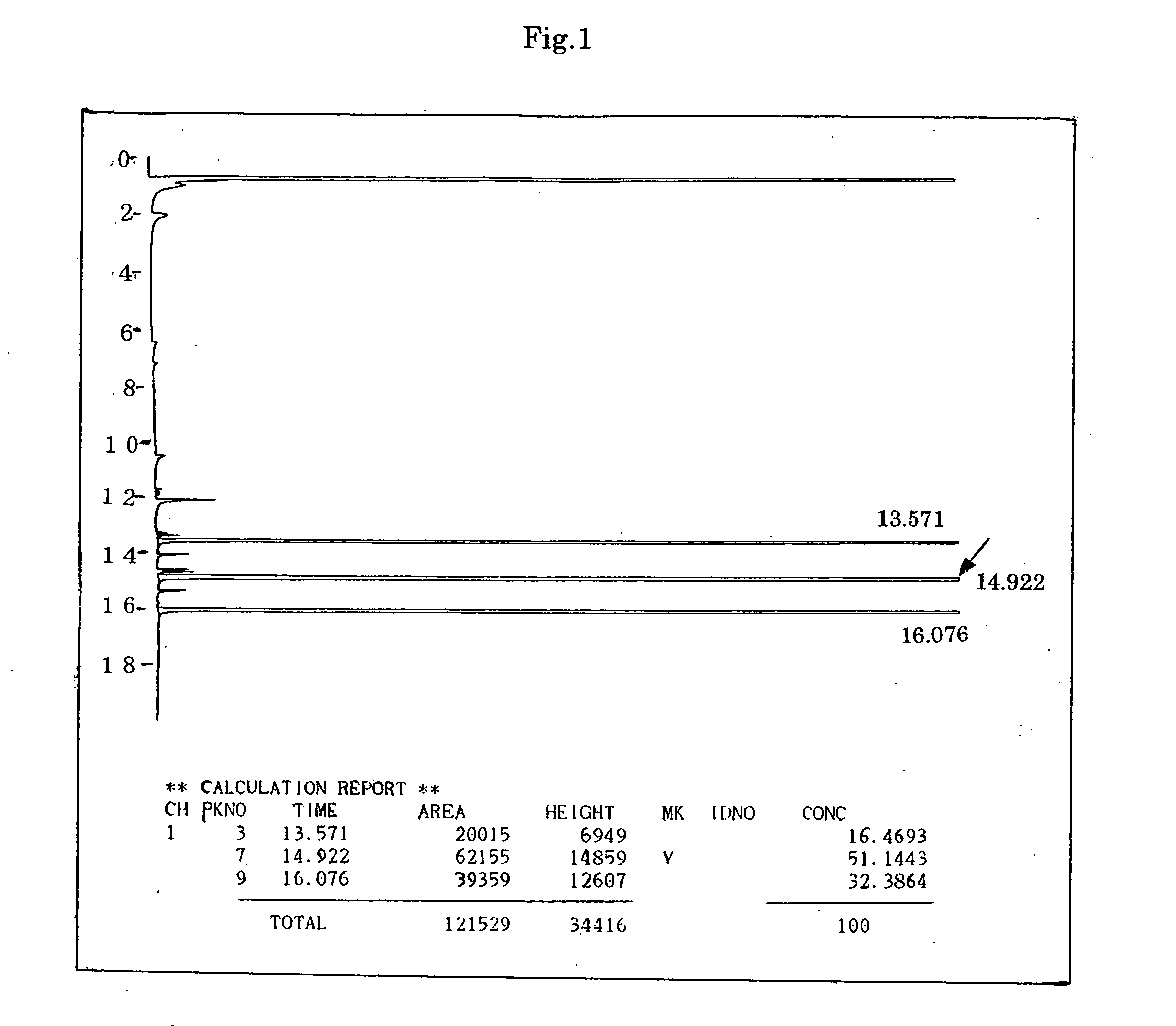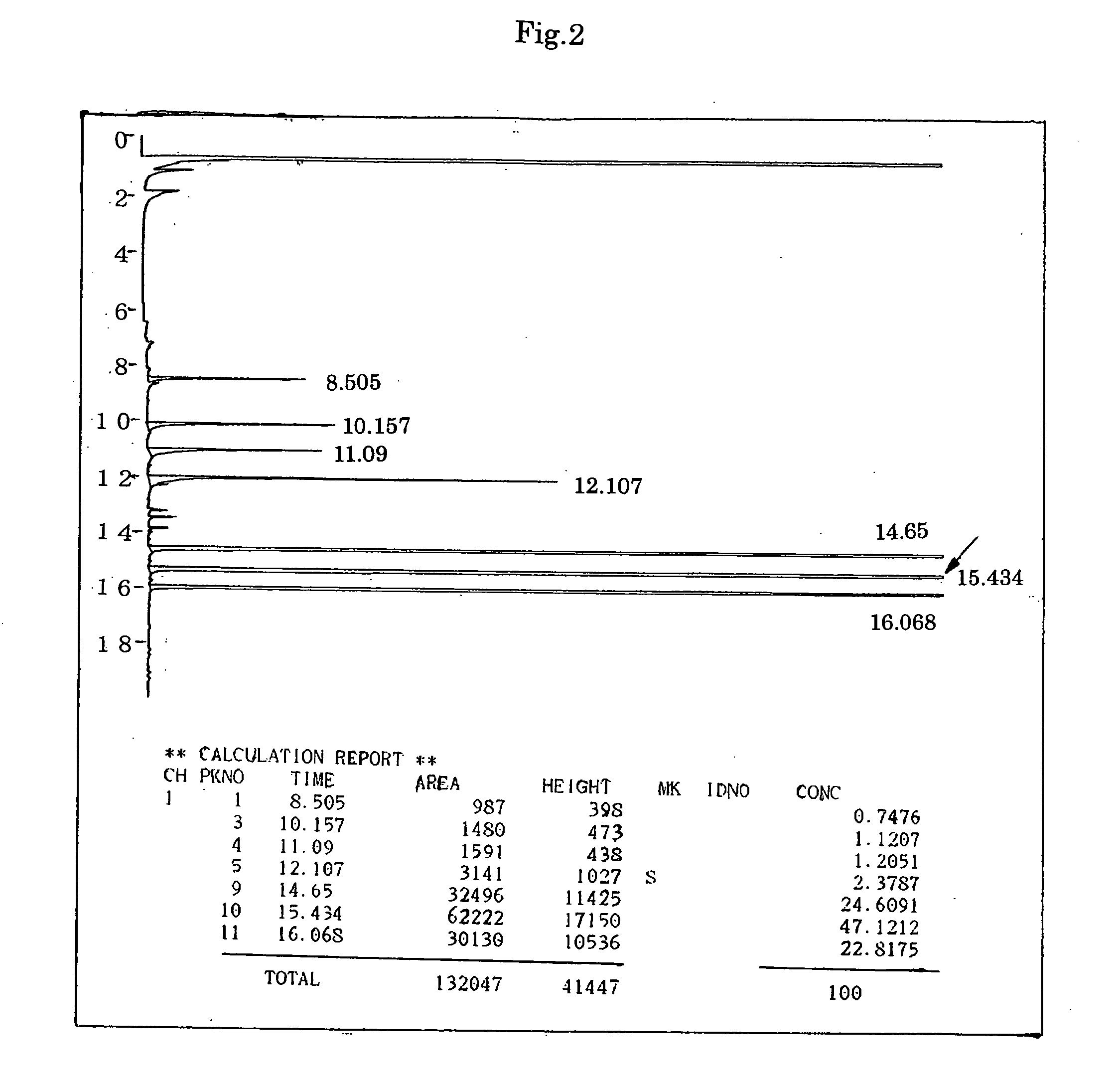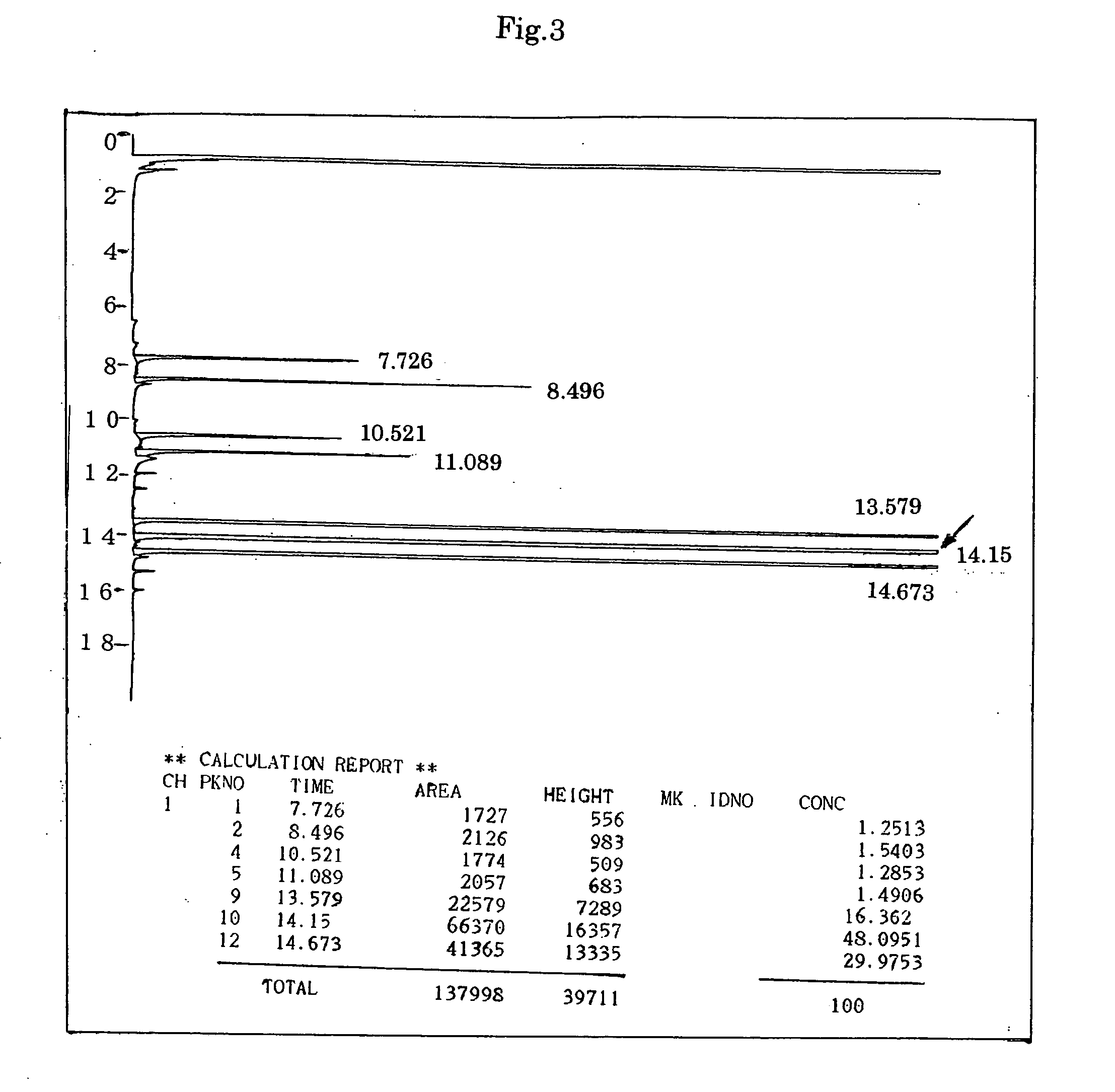Ester compound, plasticizer for bioegradable aliphatic polyester resin, and biodegradable resin composition
- Summary
- Abstract
- Description
- Claims
- Application Information
AI Technical Summary
Benefits of technology
Problems solved by technology
Method used
Image
Examples
synthesis example 1
Synthesis of Mixed Alcohol Ester 1
[0127] A 1 L four-necked flask equipped with a stirrer, thermometer, water separator and reflux tube was charged with 146.0 g (1.0 mole) of adipic acid, 120.0 g (1.0 mole) of diethylene glycol monomethyl ether, 178.2 g (1.1 moles) of diethylene glycol monobutyl ether, 1.9 g of p-toluenesulfonic acid and 120.0 g of toluene. The mixture was heated to 118° C. over a period of 30 minutes while being stirred at atmospheric pressure. Reflux started at the above temperature (118° C.). Six hours after the start of refluxing, the temperature rose to 145° C. due to the generation of esters and 37.3 g (2.1 moles) of water was recovered. Since no more water generation was observed, the reaction was judged to be complete. After the completion of the reaction, the reaction product was cooled to 60° C. and neutralized by adding, at the same temperature (60° C.), sodium carbonate in an amount corresponding to twice the acid value of the reaction product (2.4 g in ...
synthesis example 2
Synthesis of Mixed Alcohol Ester 2
[0139] The procedure of Synthesis Example 1 was followed except for using as alcohol materials 108.0 g (1.0 mole) of benzyl alcohol and 166.3 g (1.03 moles) of diethylene glycol monobutyl ether. As a result, 369.5 g of a colorless transparent liquid was obtained. The yield was 97.1% and the acid value of the product was 0.08 (mg KOH / g).
[0140] Gas chromatographic analysis of the product was carried out under the same conditions as in Synthesis Example 1, and found that the purity of the desired product, benzyl butyldiglycol adipate, was 47.1% by area. FIG. 2 shows the results of the gas chromatographic analysis. In FIG. 2, the arrow indicates the peak attributed to benzyl butyldiglycol adipate.
synthesis example 3
Synthesis of Mixed Alcohol Ester 3
[0141] The procedure of Synthesis Example 1 was followed except for using 114.9 g (1.06 moles) of benzyl alcohol in place of 178.2 g (1.1 moles) of diethylene glycol monobutyl ether. As a result, 323.0 g of a colorless transparent liquid was obtained. The yield was 85.0% and the acid value of the product was 0.09 (mg KOH / g).
[0142] Gas chromatographic analysis of the product was carried out under the same conditions as in Synthesis Example 1, and found that the purity of the desired product, benzyl methyl diglycol adipate, was 48.1% by area. FIG. 3 shows the results of the gas chromatographic analysis. In FIG. 3, the arrow indicates the peak attributed to benzyl methyl diglycol adipate.
PUM
| Property | Measurement | Unit |
|---|---|---|
| Biodegradability | aaaaa | aaaaa |
Abstract
Description
Claims
Application Information
 Login to View More
Login to View More - R&D Engineer
- R&D Manager
- IP Professional
- Industry Leading Data Capabilities
- Powerful AI technology
- Patent DNA Extraction
Browse by: Latest US Patents, China's latest patents, Technical Efficacy Thesaurus, Application Domain, Technology Topic, Popular Technical Reports.
© 2024 PatSnap. All rights reserved.Legal|Privacy policy|Modern Slavery Act Transparency Statement|Sitemap|About US| Contact US: help@patsnap.com










